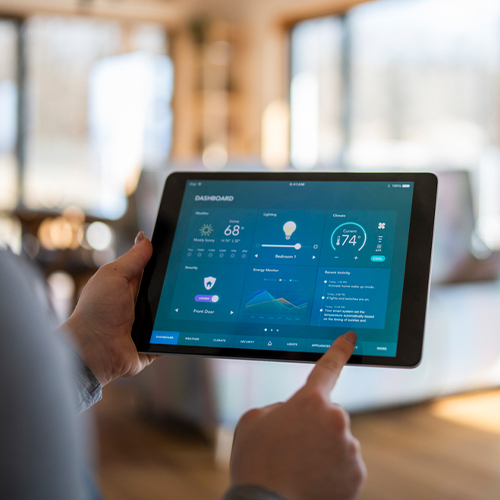Why Homeowners Call Rhema
Common Questions About Smart Home Integration Services
Start by identifying your top priorities. Many homeowners begin with smart thermostats, lighting, or doorbell cameras because they are easy to install and deliver immediate benefits. Choose devices that solve specific problems or make daily routines more convenient.
Look for products compatible with your current devices or preferred voice assistant. As you become more comfortable with technology, you can expand your setup with automation features, security systems, or a central hub for unified control.
You can begin with individual devices controlled through their own apps. Many smart bulbs, plugs, and cameras operate independently and are easy to set up without any extra equipment. This is a good way to explore smart home features without committing to a full system.
If you want to connect multiple devices or automate actions between them, a smart home hub is helpful. Hubs bring everything into one app and allow coordinated automation, such as turning off lights and locking doors with a single voice command or schedule.
Smart devices carry some risk, like any internet-connected technology, but there are steps you can take to protect your system. Start by choosing products from trusted brands with strong security track records. Look for devices that offer encryption and security certifications.
Use unique passwords, enable two-factor authentication, and keep your device firmware updated. Secure your Wi-Fi network with a strong password and consider creating a separate network just for smart devices. These practices help reduce the chance of unauthorized access.
Yes. Smart home integration can be completed in homes of any age. Most smart devices use wireless technology, which eliminates the need for extensive wiring or wall modifications. This makes them compatible with older or historic homes where preserving original features is important.
If wiring upgrades are needed, our electrical contractors offer safe, low-impact solutions for many smart home installations.
For gradual, non-invasive smart upgrades to your home, we recommend starting with a smart thermostat, smart bulbs, or plug-in smart outlets, which allow you to control lamps, fans, and appliances from your phone. These devices are affordable, easy to use, and require no rewiring.
If safety and convenience are your main goals, upgrades like smart locks, doorbell cameras, and motion sensors can be added without having to renovate your space at all.
Whatever your goals, there are plenty of smart device options that can improve your home’s function while preserving its original structure.

